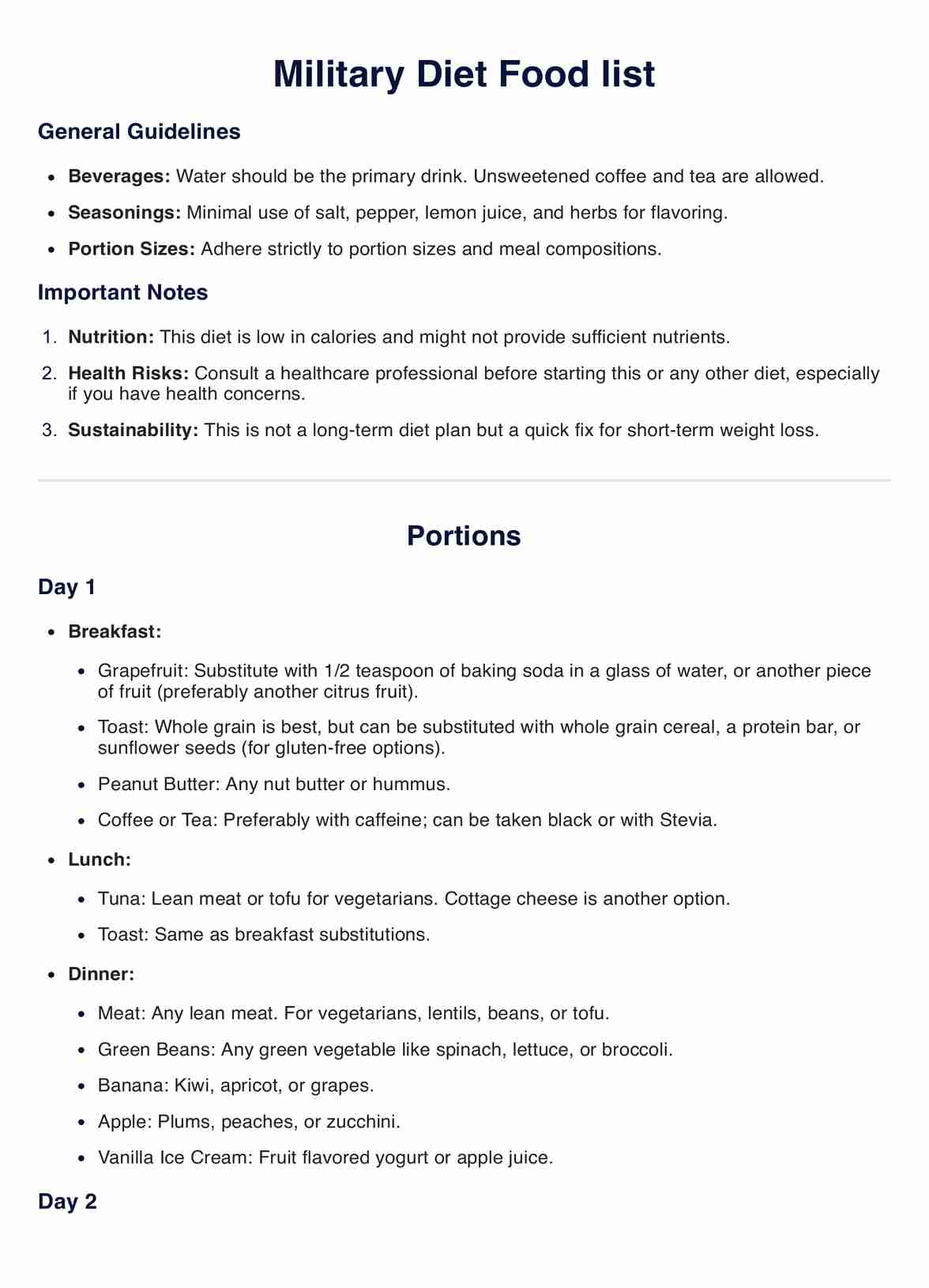The 3-day military diet claims you can lose up to 10 pounds, or at least a few pounds in a week, but this varies by individual and isn't typically sustained long-term.

Military Diet
Explore Carepatron's Military Diet Food List: A quick, effective weight loss guide with a structured, low-calorie meal plan.
Use Template
Military Diet Template
Commonly asked questions
The military diet involves a strict low-calorie meal plan for three days followed by four days of fewer restrictions. It specifies which foods to eat and in what amounts.
Following the military diet for a month could lead to nutritional deficiencies and is not recommended due to its highly restrictive nature. Long-term adherence could also slow metabolism and lead to muscle loss.
EHR and practice management software
Get started for free
*No credit card required
Free
$0/usd
Unlimited clients
Telehealth
1GB of storage
Client portal text
Automated billing and online payments











